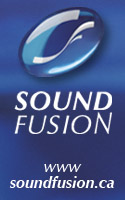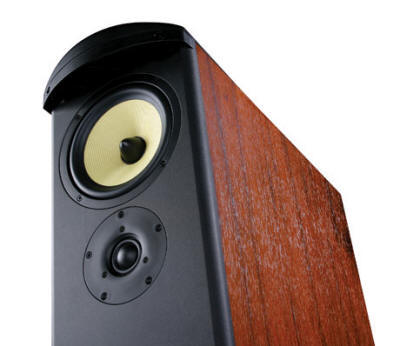
You are reading the older HTML site
Positive Feedback
ISSUE
27
dcm loudspeakers
TFE 200 loudspeakers
as reviewed by Greg Ewing

 |
|
|
You are reading the older HTML site
Positive Feedback
ISSUE
27
dcm loudspeakers TFE 200 loudspeakers as reviewed by Greg Ewing
|
|
|
I really wanted to hear the latest DCM loudspeakers in the $1000 price range, as I have very fond memories of the original DCM Time Windows of the late 70s. I knew—or knew of—many people who owned Time Windows at that time. Quite a few of them took the Time Windows to their logical conclusion by buying two pairs and stacking them. Those were the days. For $690 a pair, the Time Windows were a bargain, and a cult classic.
DCM is now offering the TimeFrame Evolution
line. The TFE 200s, which sell for $1000 a pair, are the top of the TFE
line, and are three-way speakers with a stated efficiency of 88 dB. Each
cabinet contains a 30mm cloth dome tweeter, a 6.5-inch midrange In addition to the stunning bass, the TFE 200s' midrange and highs were so revealing that it was easy to hear the differences between several inexpensive non-oversampling DACs I had been playing with. The DCMs clearly revealed the glorious midrange transparency of the DIY Paradise Monica 2 and the stunning bass of the Lite Audio DAC-AH. A disc that showed off the TFE 200s' capabilities particularly well was the Peter Xifaras CD, Appassionáto. This recording has everything to offer the audiophile—lightning-fast transients, low bass, dynamics, clarity, and so on. The DCM designers have done a very good job of making the TFE 200 drivers sound as one. These speakers can be compared in this respect with designs in the $2000 to $4000 range, without embarrassment. As a bonus, the sound of the TFE 200s does not change with listening height. They sounded very clean even when I was standing, and I am six feet tall. The issue of efficiency needs to be addressed. I happened to have five amplifiers on hand during my time with the DCMs, and even the low-power Sonic Impact amp drove them to reasonable levels. It began to clip during very strong bass passages, but this was only to be expected. The combination sounded incredible for the price. The TFE 200s also handled my 400-watt Behringer amp with ease. My room overloaded before the DCMs began to compress the signal.
If I had to give an "elevator pitch" on these speakers, I would say that they sound light and transparent, with stunning low bass for their price. Although I didn't intend to do a shootout with my reference Magnepan 1.6QRs, I was amazed at the fact that the DCMs threw an image nearly as large as that of the much larger planars. The DCMs only lost out to the Maggies in midbass warmth and top end transparency. The DCMs could float images in space as well as the Maggies, but lacked the depth of field that dipoles can produce. Would I replace my beloved Maggies with the TFE 200s? No, but I have not heard any speakers under $1000 that would even make me consider doing so. I confess that I am addicted to the Maggies' overly warm midbass and midrange, which made the TFE 200s sound slightly light and bright by comparison. The DCM TFE 200s do nearly everything right, at a price that is way beyond competitive. The TFE 200s sound like super-transparent mini-monitors with a perfectly integrated subwoofer. The fact that they are packaged in beautiful, slim cabinets is icing on the cake. Oh, and if memory serves, the TFE 200s would wipe the floor with the old Time Windows, especially in midrange transparency. Greg Ewing Specifications
DCM Loudspeakers
|